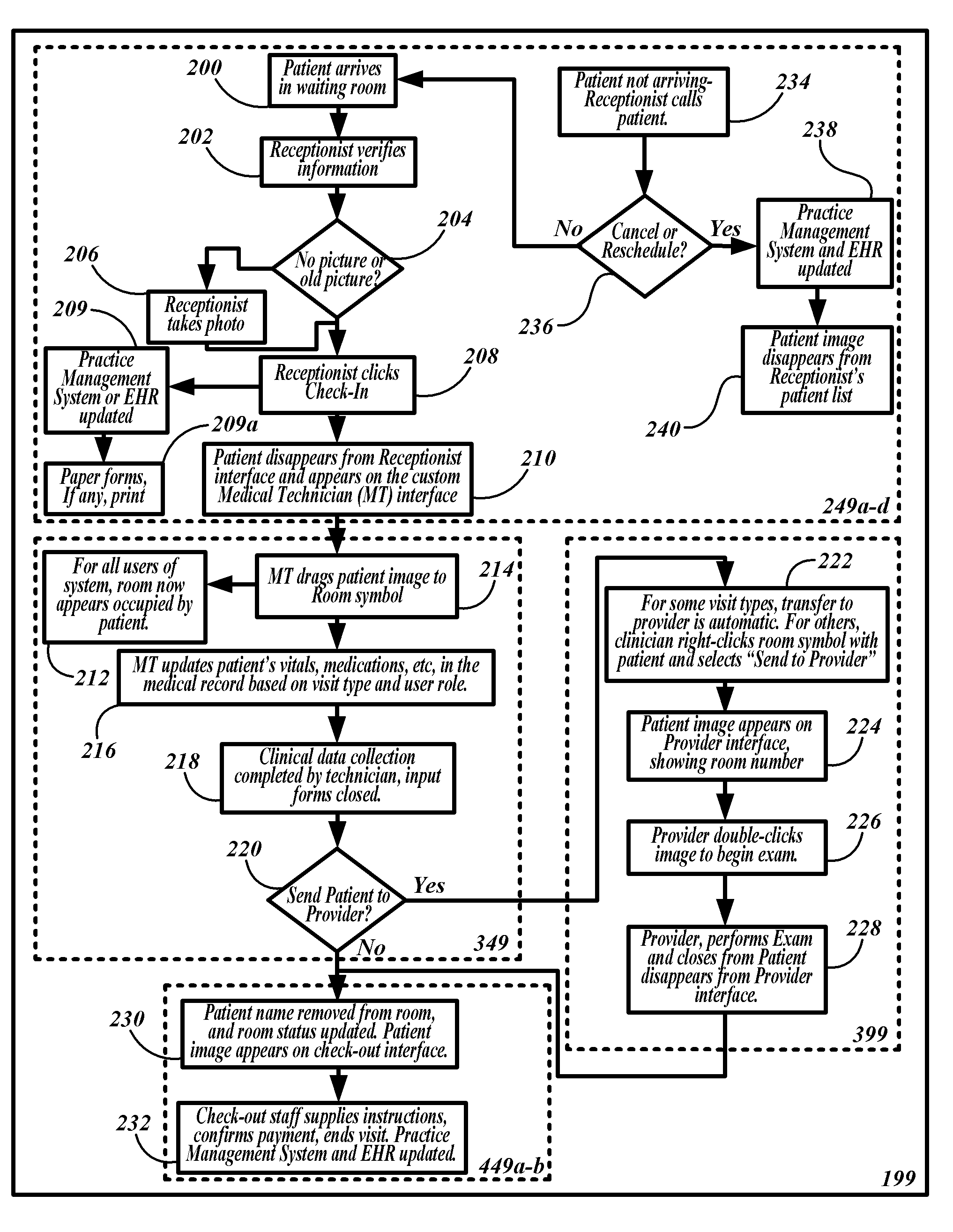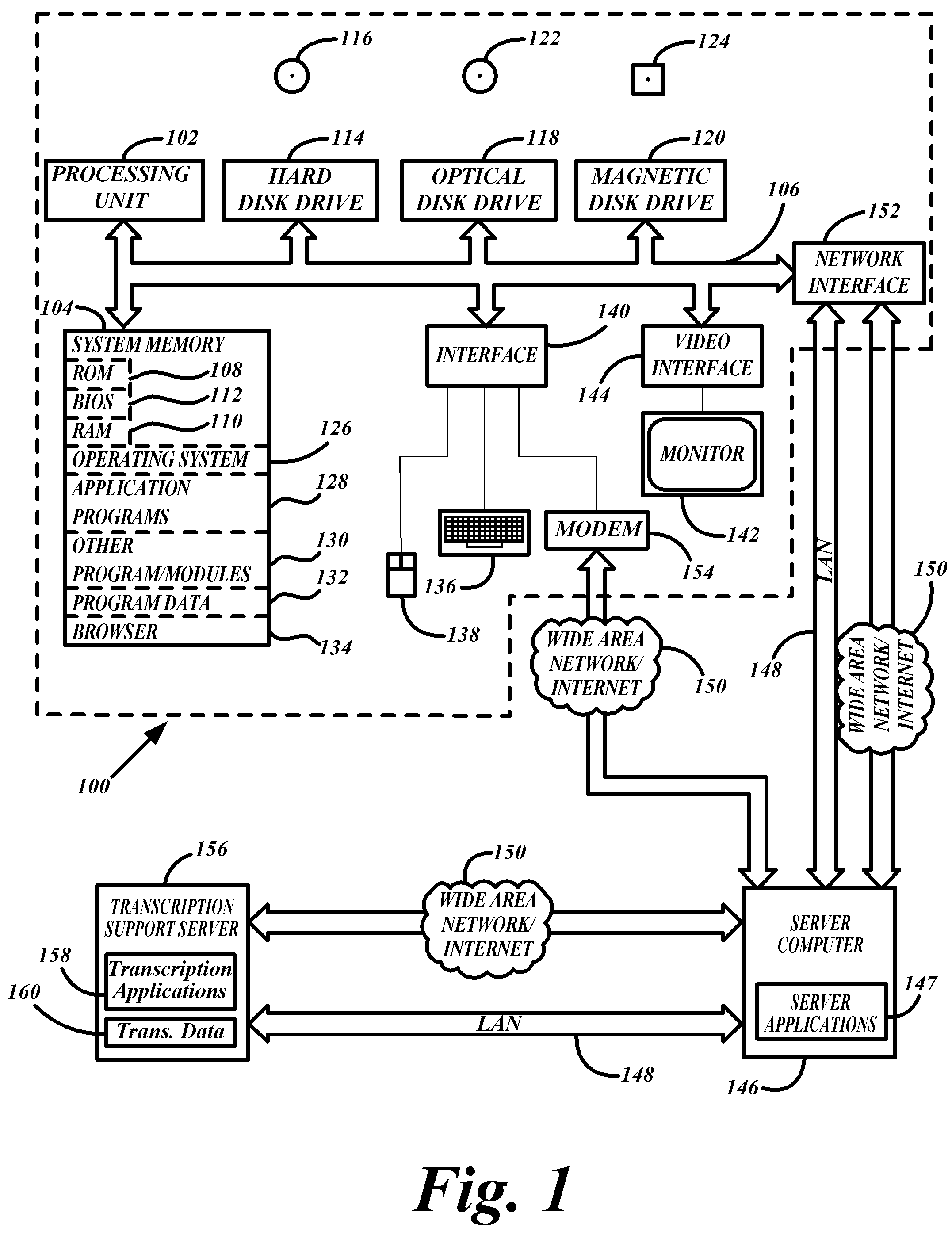System and method for enhancing organizational efficiencies to deliver health care in an ambulatory health care setting
a health care setting and organizational efficiency technology, applied in healthcare informatics, medical practices/guidelines, instruments, etc., can solve the problems of difficult coordination of care efforts and resources, time-consuming, and easy problems of co-workers
- Summary
- Abstract
- Description
- Claims
- Application Information
AI Technical Summary
Benefits of technology
Problems solved by technology
Method used
Image
Examples
Embodiment Construction
[0033]A system and method that enhances clinical efficiency in the delivery of health care by coordinating the efforts of all clinic members, allocating clinical resources, providing accurate information to clinic management, and calling specific forms at the appropriate time in the EHR is disclosed.
[0034]One embodiment of the present invention provides a system and method capturing a patient image and associating that image with a patient in an application database and automatically recording the patient as present in a scheduling system. For example, a scheduling system can be EHR database driven. This embodiment also automatically populates and prints paper forms if necessary (e.g., printed forms may be standard and / or customized medical data forms).
[0035]Another embodiment of the present invention provides a system and method for automatically centering, cropping, and receiving a patient image so the recorded patient image is of a uniform dimension and standard composition.
[0036...
PUM
 Login to View More
Login to View More Abstract
Description
Claims
Application Information
 Login to View More
Login to View More - R&D
- Intellectual Property
- Life Sciences
- Materials
- Tech Scout
- Unparalleled Data Quality
- Higher Quality Content
- 60% Fewer Hallucinations
Browse by: Latest US Patents, China's latest patents, Technical Efficacy Thesaurus, Application Domain, Technology Topic, Popular Technical Reports.
© 2025 PatSnap. All rights reserved.Legal|Privacy policy|Modern Slavery Act Transparency Statement|Sitemap|About US| Contact US: help@patsnap.com



